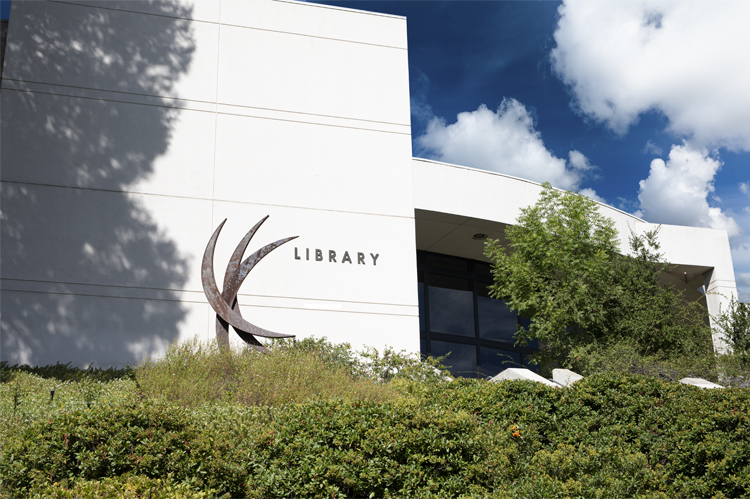Diversity, Equity & Inclusion Resources
This page includes a collection of resources that support College of the Canyons' mission in championing diversity, equity, inclusion, and global responsibility, while providing clear pathways in an engaging, supportive environment where all students can successfully achieve their educational goals. Many of the materials included here are Open Educational Resources (OER), which means that you may freely and legally use these materials at no cost and without needing to ask permission. More information on using or developing OER, visit www.canyons.edu/oer
 Culturally Responsive Pedagogy
Culturally Responsive Pedagogy
Culturally responsive pedagogy acknowledges the cultural heritage of different ethnic and racial groups and bridges meaningfulness between the students' lived experiences and the college classroom. It involves putting students first in the consideration of course development in implementation. It also means operating in a student-focused classroom, being keenly aware of the student demographic, along with the processes of sharing course materials. Culturally Relevant pedagogies incorporate a critical lens to understanding the cultural contexts and realities from which our students come. It involves a constant self-reflection on unconscious and conscious biases as well as shifting trends in student cultures and trends. The Equity-Minded practitioner has the ability to adapt their knowledge to the specific context in which they are practicing, always with student success in mind (Williams-Paez, 2020).
Culturally Responsive Teaching OER Textbook
Culturally Responsive Teaching (OER Textbook - PDF), written by Williams-Paez, Pamela (2020) provides an overview of culturally relevant pedagogy and strategies for creating classrooms that are culturally responsive, looking at the development of interpersonal relationships, our curriculum, our values and beliefs, classroom rules and policies, learning-centered syllabus and equitable classroom facilitation. This course includes resources and opportunities for engagement specific to College of the Canyons
College of the Canyons "Culturally Responsive Teaching" Course
Culturally Responsive Teaching (NC.EDUC-104) is a free College of the Canyons course developed by the Center for Excellence in Teaching & Learning. This course offers participants the opportunity to read and discuss with colleagues, strategies for identifying ways to craft an equitable classroom and course syllabus. This is a hands-on class and a great way to foster collegiality and support, while learning how to make our classes the best possible experience for students.
@ONE "Equity & Culturally Responsive Online Teaching" Course
Equity & Culturally Responsive Online Teaching (@ONE course) guides participants through a critical journey of becoming an equity-minded educator with the goal of cultivating inclusive experiences that empower all students to achieve their full intellectual capacity. As a participant in this course, you will apply principles of intersectionality, critical race theory, and culturally responsive teaching to your online course. In a collaborative peer-to-peer learning environment, you will analyze your position and how it influences your core teaching values, interrogate the power at play in your online teaching practices, and leave the course with an equity-minded syllabus and an action plan to continue to center diversity, equity, and inclusion in your teaching and institution.
 Inclusivity in Disciplines
Inclusivity in Disciplines
Recent research highlights the representation of historically marginalized groups in many popular and widely-used textbooks and in discipline specific materials. Ongoing research and initiatives attempt to improve and bridge the gap in the area of representation and diversity in higher education. Considering inclusivity helps us to identify whether the stories and examples we share and the course textbooks and materials we use accurately reflect the diverse populations and experiences in the United States and of the students in our classes.
C4DISC Toolkits for Equity: Guidelines on Inclusive Language and Images in Scholarly Communication.
Brandle, Shawna M. (2020). It's (Not) in The Reading: American Government Textbooks' Limited Representation of Historically Marginalized Groups. The Profession: American Political Science Association
Herburger, Isabel (2020). New Narratives and Content are Crucial for Anti-Racist Education in History Class. New America Foundation.
Wood, Sara, et al. (2020). A scientist like me: demographic analysis of biology textbooks reveals both progress and long-term lags.
Proceedings of the Royal Society B; N.A. (2018). More diversity needed in medical school textbooks. Science News.

Equity Rubrics
A variety of rubrics and guiding principles have been developed to assist instructors in improving their resources and classroom environments with a focus on diversity, equity and inclusion. For example, the Academic Senate for California Community Colleges (ASCCC) Open Educational Resources Initiative (OERI) suggests that to design and present resources always with students in mind, we should:
- Ensure content supports students and provides space for, and valuing of, their own contribution to collective learning and knowledge.
- Strive for meaningful inclusion of diverse populations to ensure that their perspectives and their experiences are reflected and valued.
- Develop resources that contribute to a learning environment that facilitates student learning and growth.
- Support students as they examine society as a system and the role that they play in perpetuating or changing the system.
- Facilitate students' ability to challenge their own knowledge and opinions, process the discomfort, and, if warranted, choose to change.
- Assist students in understanding how information is created, validated, and disseminated, including their role in this process, and how to critically examine evidence and responsibly share information.
The Equity Rubrics collection below includes resources, guides and recommendations that you are free to adopt and use.
Peralta Online Equity Rubric for Online Course Design
EDUCAUSE (2021). Inclusive Language Guide
ASCCC OERI's Inclusion, Diversity, Equity, and Anti-Racism (IDEA) Framework
OpenStax's Diversity and Representation Development Guidelines
American Psychological Association Inclusive Language Guidelines

Open Pedagogy
Open pedagogy views students as "co-creators of knowledge" and as "critical and reflective participants in the learning process" as described by Paulo Freire in "Pedagogy of the Oppressed." From this perspective, the classroom becomes an anti-oppressive space where students actively construct meaning. Beyond cost savings and open access, utilizing open pedagogy to provide free alternatives to a fee-based textbook also allows us to apply culturally responsive pedagogy focused on diversity, equity and inclusion. In adopting or creating open learning resources, we choose what images are utilized in our text, whose stories are told, what history is revealed.
What Is Open Pedagogy
What is Open Pedagogy: Seminal article by David Wiley
What is Open Pedagogy? 1-minute video by Dr. Rajiv Jhangiani
Are Your Assignments Renewable or Disposable? by BYU Center for Teaching and Learning
Non-Disposable vs. Disposable by Aloha Sargent
Open Educational Practices by Dr. Rajiv Jhangiani
Examples of Open Pedagogy
There are a variety of ways students can participate in open projects. Explore some other open pedagogy examples listed on this guide from UTA. The Open Pedagogy Notebook also includes examples of open student projects.
Inclusive Images That Are Openly Licensed*
CCCOER: Looking for Images that Reflect Diversity, Equity, and Inclusion? Ask the Community - CCCOER 40
Open Oregon: Open Images 27
Southern New Hampshire University: Images - Open Educational Resources (OER) 24
California Community Colleges - Free and Diverse Image Libraries - Online Network of Educators 6
Walls.io - 13 Diverse Free Stock Photo Sites for Your Brand 1
Images of Empowerment 37: Free images of women's lives and work, created by the William and Flora Hewlett Foundation, the David and Lucile Packard Foundation, and Getty Images; License: CC-BY-NC-4.0
Allgo Plus-Size 20: Free stock photography collections featuring plus-size people; License: While attribution is not required, please credit
Disabled And Here 30: Free stock photography featuring disabled BIPOC (Black, Indigenous, people of color), varied body sizes/types, sexual orientations, and gender identities in the Pacific Northwest; License CC BY 4.0
The Gender Spectrum Collection: 20Free stock photos of trans and non-binary people, licensed CC BY-NC-ND 4.0
Nappy: 22Free high-resolution photos of black and brown people, licensed Creative Commons Zero (CC0)
PICNOI: 16Free photos of people of color; no attribution required, but can give credit by linking to site
#WOCinTech Chat: 6 Free photos of women and non-binary people of color working in the Tech field; licensed CC BY #WOCinTech Chat or wocintechchat.com 2
Redefining Women Icon Collection: 20Icons of women; License: Creative Commons Public Domain CC0 1.0
Open Peeps, Hand-Drawn Illustration Library 33 vector style graphics (all licensed CC0)
Create HER Stock - https://createherstock.com/free-stock-photos 3 - Positive images of black women.
The Jopwell Collection 2 - Focus: POC at work (email required to download and photos are watermarked and many include Jopwell branding in the photo itself)
Disability:IN 1 - Disability Inclusive Stock Photography collection CC BY 4.0 (images are watermarked)
Natural Women Collection - Canva 3 - women underrepresented in stock photography (signup required to download)
UKBlackTech 3 - Free stock photos of POC in tech in the UK CC BY 2.0
Humaaans 5 - Mix-&-match illustrations of people with a design library
The Greats 2 is a collection of free and open illustrations from great artists, designed for activists, CC BY-NC-SA
Age-positive image library 1 (Center for Ageing Better) positive and realistic images of over 50sUnsplash - unsplash.com
Burst - burst.shopify.com 2
Pexels - pexels.com
Pixabay - https://pixabay.com/
Openverse (formerly known as the Creative Commons (CC) Search ) https://wordpress.org/openverse/
Want to Learn More?
Exploring OER & Open Pedagogy COC Faculty Resource CourseThis resource course contains resources and guides on finding and using Open Educational Resources to support student learning and engagement! Explore this course, to learn how to use, find, and embed OER:
|
*Source: "What are good resources for finding diverse images of people?" by Liz Yata is licensed under CC BY-SA 4.0

 My Canyons
My Canyons  Canvas
Canvas 

